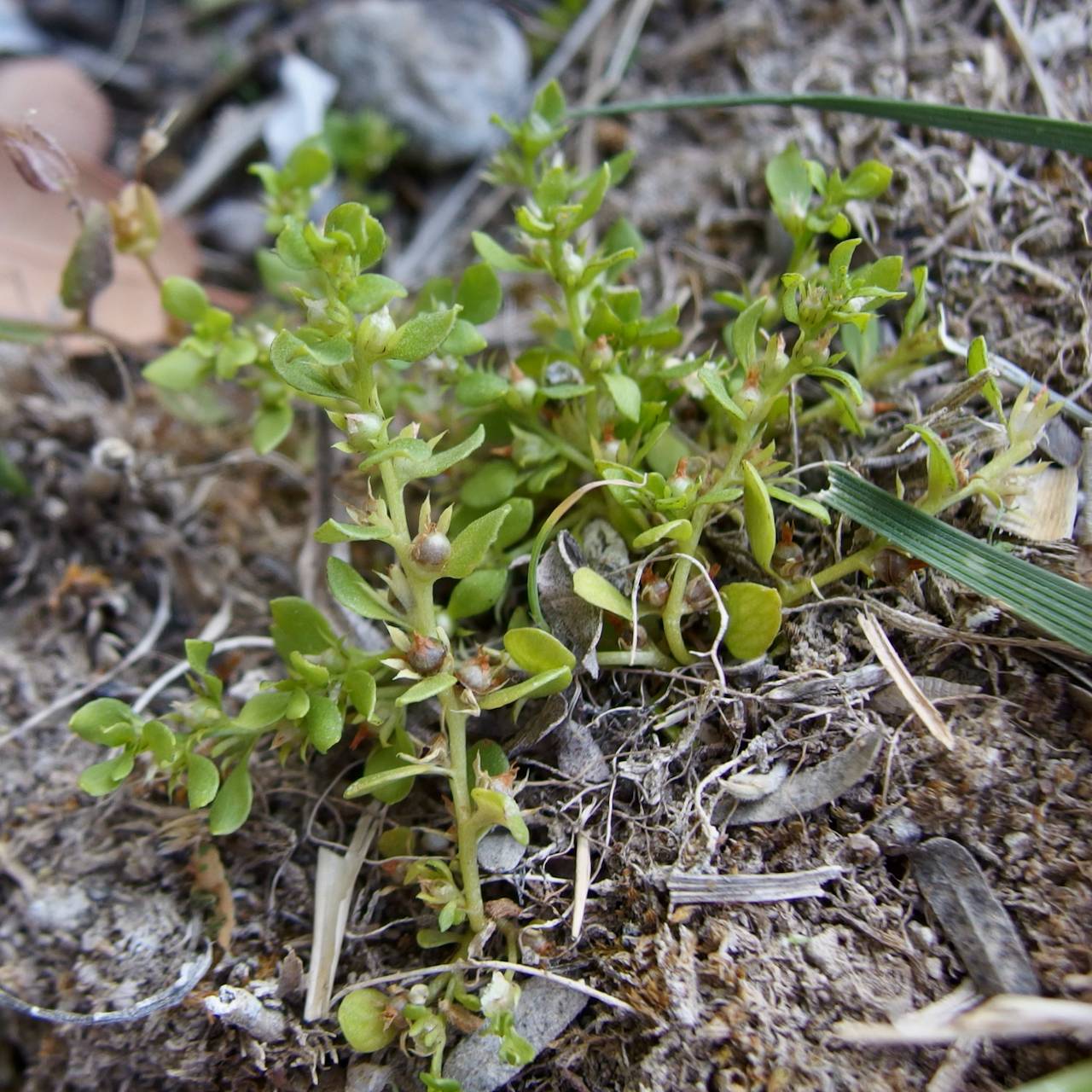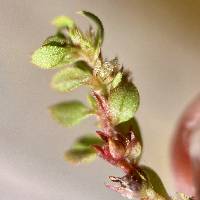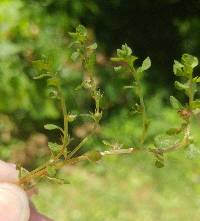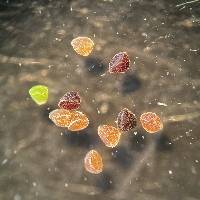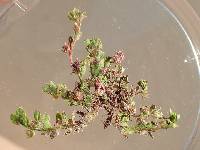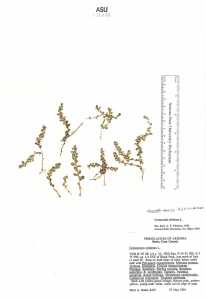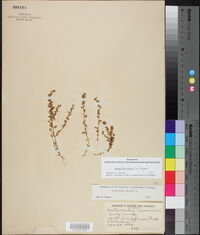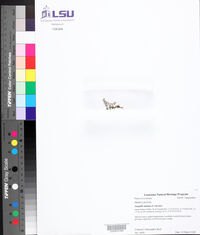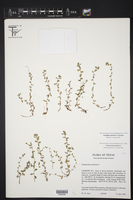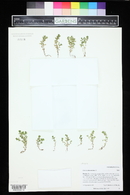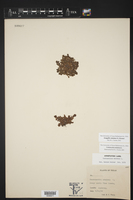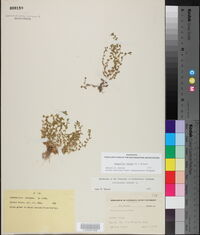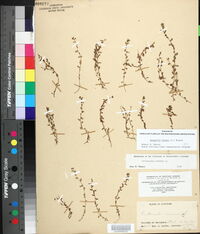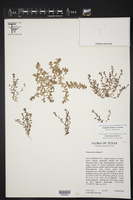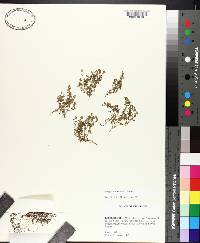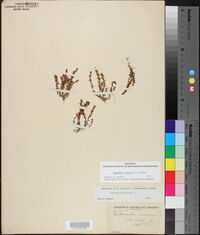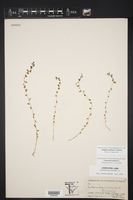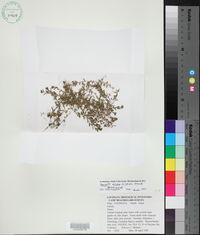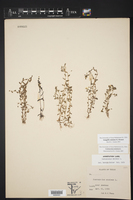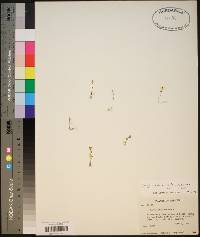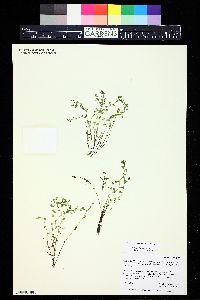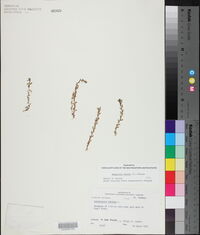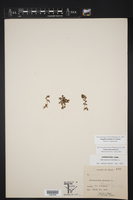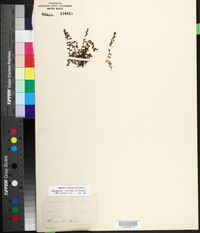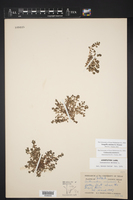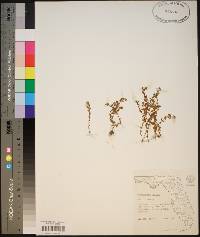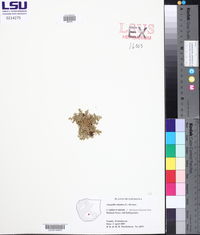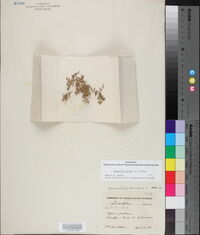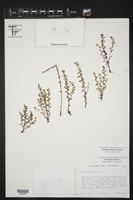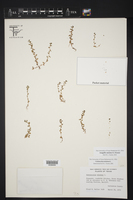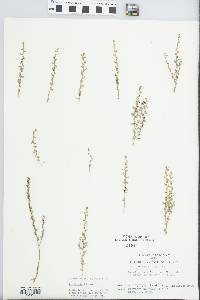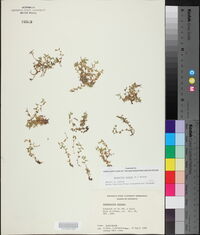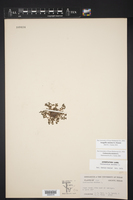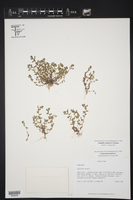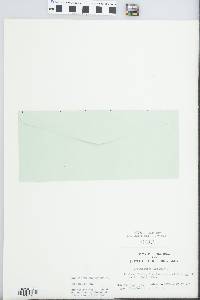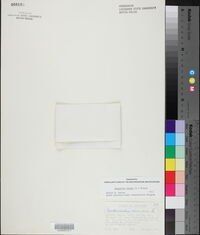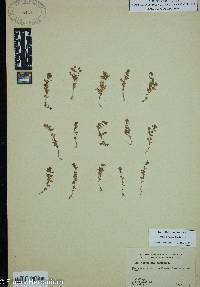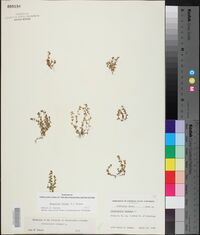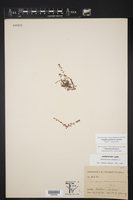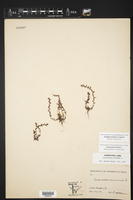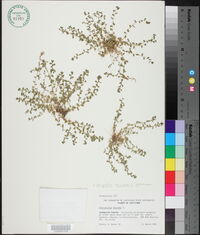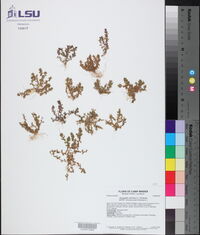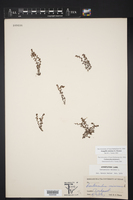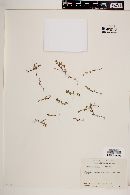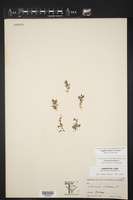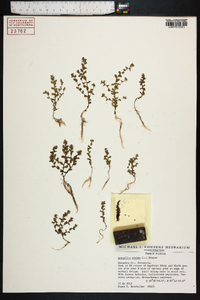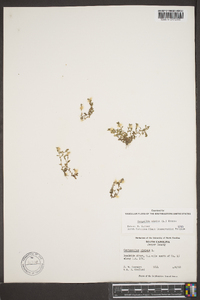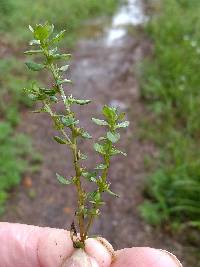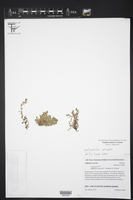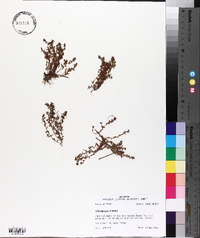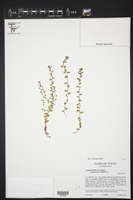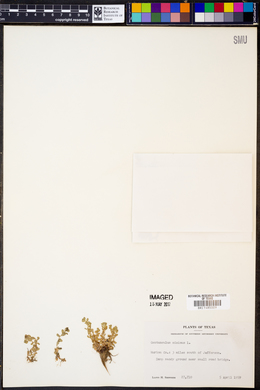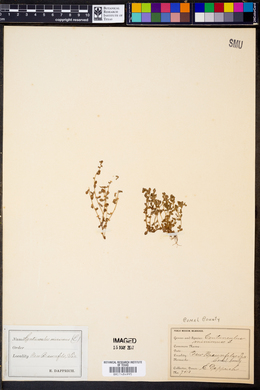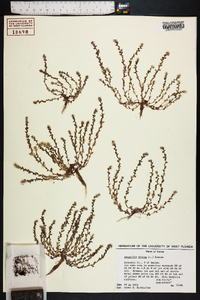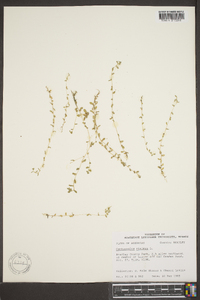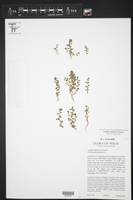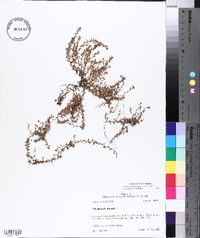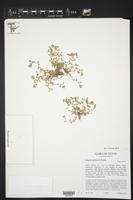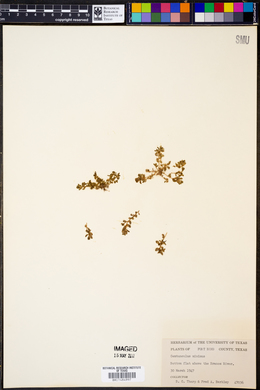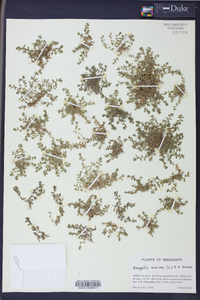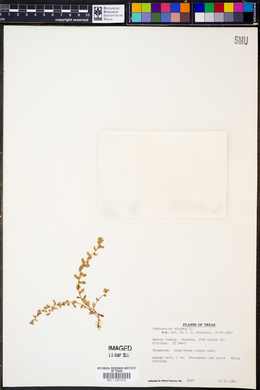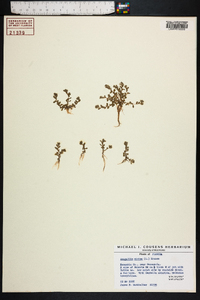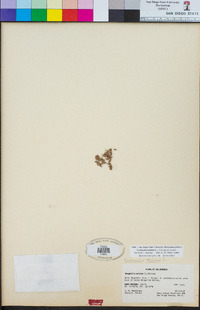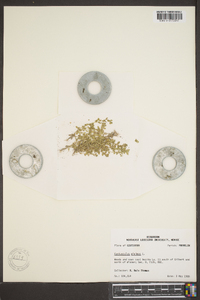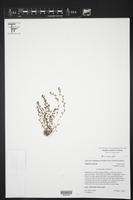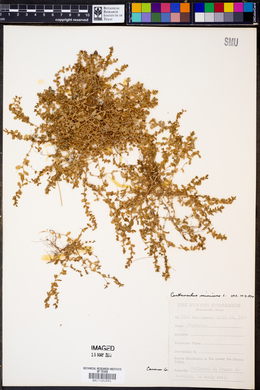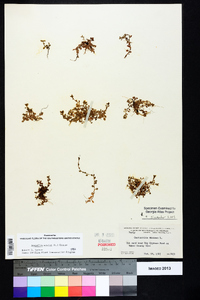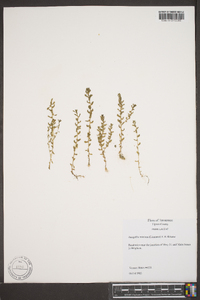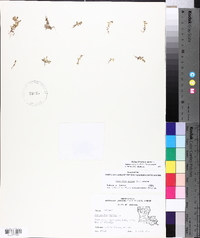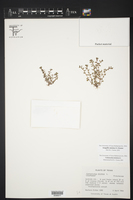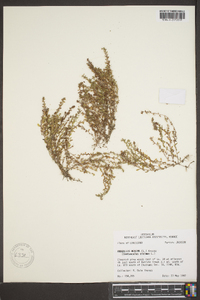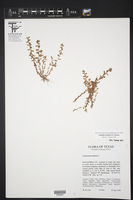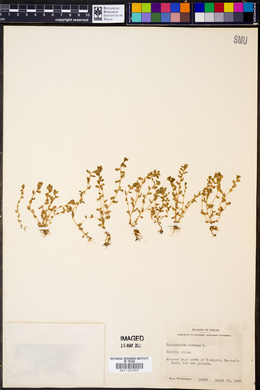Lysimachia minima
|
|
|
|
Family: Primulaceae
Chaffweed, more...Chaffweed
[Anagallis minima (L.) Krause, moreCentunculus lanceolatus Michx., Centunculus minimus L.] |
Plants annual. Stems erect, 0.1-0.4(-1) dm. Leaves alternate (proximal sometimes opposite); blade ovate or obovate, 1-5 (-11) × 1-5 mm. Pedicels absent or erect in fruit, to 1 mm, shorter than subtending leaf. Flowers: sepals 4-5, calyx divided to ca. 3/4, 1.5-3 mm, longer than corolla, margins entire or minutely crenulate, narrowly or not scarious, apex long-acuminate; petals 4-5, corolla white or pink, salverform (almost rotate) to slightly campanulate, 1.4-1.7(-2) mm. Capsules 1.5-2 mm. Seeds 5-13. 2n = 22 (Eurasia). Flowering spring-fall. Moist to dry roadsides, disturbed meadows, forest edges, stream banks, swales; 0-300 m; Alta., B.C., N.S., Sask.; Ala., Ariz., Ark., Calif., Colo., Del., D.C., Fla., Ga., Idaho, Ill., Ind., Kans., Ky., La., Md., Miss., Mo., Mont., Nebr., N.Mex., N.Dak., Ohio, Okla., Oreg., S.C., S.Dak., Tenn., Tex., Wash., W.Va., Wyo.; Mexico; Eurasia; nearly cosmopolitan. Canadian populations of Anagallis minima are found in the Columbia River region of southeastern British Columbia to the South Saskatchewan River region of Alberta and Saskatchewan. The species also occurs on the southern tip of Nova Scotia. It is scattered across the Great Plains of the United States and is historically reported from Minnesota and New York, where it was last collected in 1901 and 1878, respectively.
Plant: annual herb; 3-25 cm tall Leaves: 5-10 mm long, sessile or nearly so; blades obovate to spatulate or elliptic, glabrous Flowers: white or pink; calyx 2-3 mm long; corolla about half as long to nearly equalling the calyx, carried beyond the calyx by the developing fruit; filaments widened at the base Fruit: circumscissile Misc: Streamsides; 300-2150 m (1000-7100 ft); Apr-Sep REFERENCES: Cholewa Anita F. 1992. Primulaceae. Ariz.-Nev. Acad. Sci. 26(1)2 FNA 2009, Kearney and Peebles 1969 Duration: Annual Nativity: Native Lifeform: Forb/Herb General: Small erect annuals 1-4 cm tall. Leaves: Ovate to obovate, alternate, sessile, 1-5 mm long. Flowers: White or pink, about 1.5-3 mm, corolla rotate with a short tube, lobes with small teeth and stalked glands on the margins, borne on peduncles surpassing the leaves. Fruits: Capsules 1.5-2 mm long. Ecology: Found in disturbed areas on roadsides, in meadows, forest edges, stream banks, and swales, from 1,000 ft and below (300 m); flowering spring-fall. Notes: Differentiate from A. arvensis by the flowers, which are salmon-colored, red, or blue, and the capsules which are 4-6 mm long in A. arvensis. Ethnobotany: Unknown Etymology: Anagallis is from the Greek work ana for again and agallein for delight in, and minima means of small size. Synonyms: Centunculus minimus, C. lanceolatus Editor: LCrumbacher, 2011 Erect or ascending, 4-12 cm; lvs subsessile, oblong or obovate, 5-10 mm; fls in most axils; sep 2 mm; cor shorter than the cal; 2n=22. Moist or wet soil; irregularly cosmopolitan, especially in warmer regions, n. along the coast to N.S. and inland to O. and Minn. Apr.-Sept. (Anagallis m.) Gleason, Henry A. & Cronquist, Arthur J. 1991. Manual of vascular plants of northeastern United States and adjacent Canada. lxxv + 910 pp. ©The New York Botanical Garden. All rights reserved. Used by permission. From Flora of Indiana (1940) by Charles C. Deam This plant is usually one and a half to four inches high and so minute as to be easily overlooked. It has been reported from Floyd and Jefferson Counties. Where I have found it, it is always a common to abundant plant. I believe it to be local, however, because of its habitat, for it apparently prefers a minimacid soil. It is found in bare places in open woods, usually associated with black oak, in bare places in pastured woods, along paths in woods, and in abandoned fields. .…… Indiana Coefficient of Conservatism: C = 3 Wetland Indicator Status: FACW |

